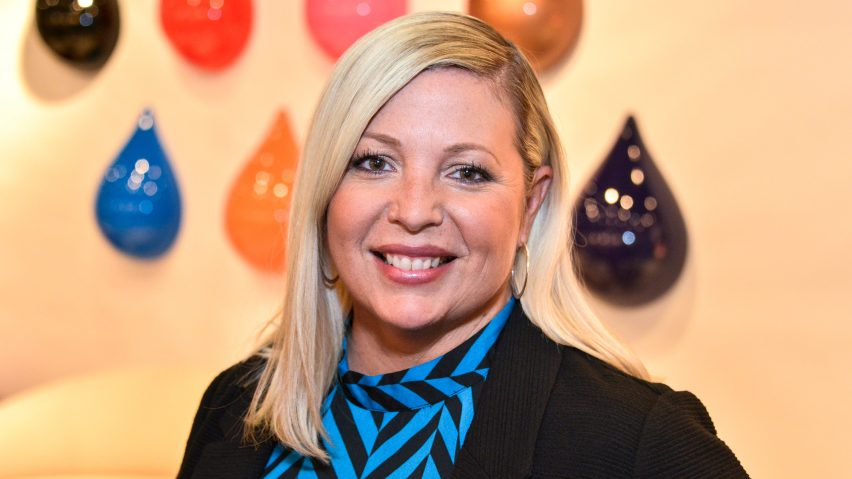
"The face of Palm Springs is changing" says Modernism Week CEO
As well as being a mecca for modernist architecture, Palm Springs is embracing climate-conscious design, says Modernism Week CEO Lisa Vossler Smith in this interview.
Vossler Smith told Dezeen that homes currently being built in the California desert town are combining modernist design principles with energy-saving strategies that include solar power and drought-tolerant landscaping.
"We have such great potential for solar thermal heating and, because we have an underground water aquifer, there are many properties with wells," she said. "So we are seeing it more and more out here."
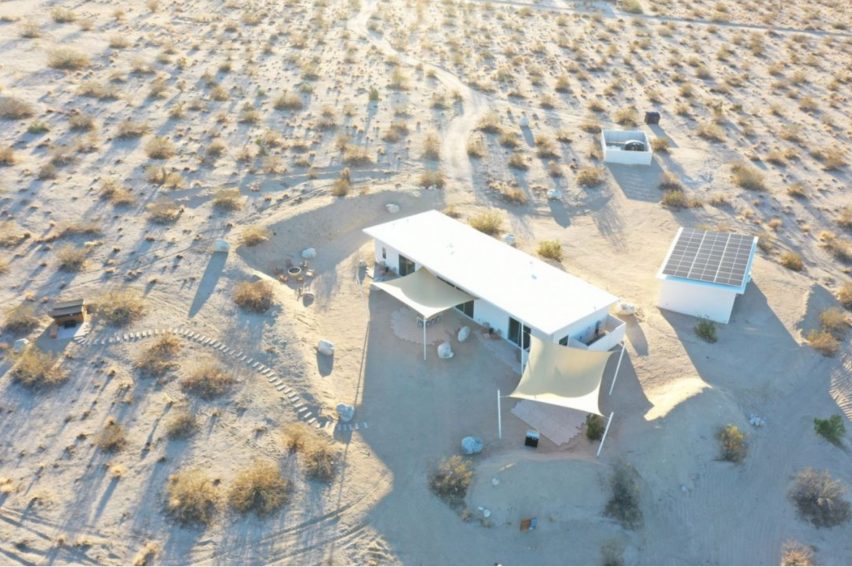
Vossler Smith spoke to Dezeen ahead of the 2023 edition of Modernism Week, a festival that invites the public to explore the mid-century heritage of Palm Springs, which starts today and runs until 26 February.
Located two hours' drive west of Los Angeles, the resort town features some of the world's best-known modernist houses, including Richard Neutra's Kaufmann House and John Lautner's Elrod Residence.
The event is now in its 18th year, with a programme that will see 250 homes opened up to the public.
"Palm Springs represents a resort-style lifestyle"
The enduring appeal of modernist-style homes, according to long-time Palm Springs resident Vossler Smith, is that they make people nostalgic for a less complicated time.
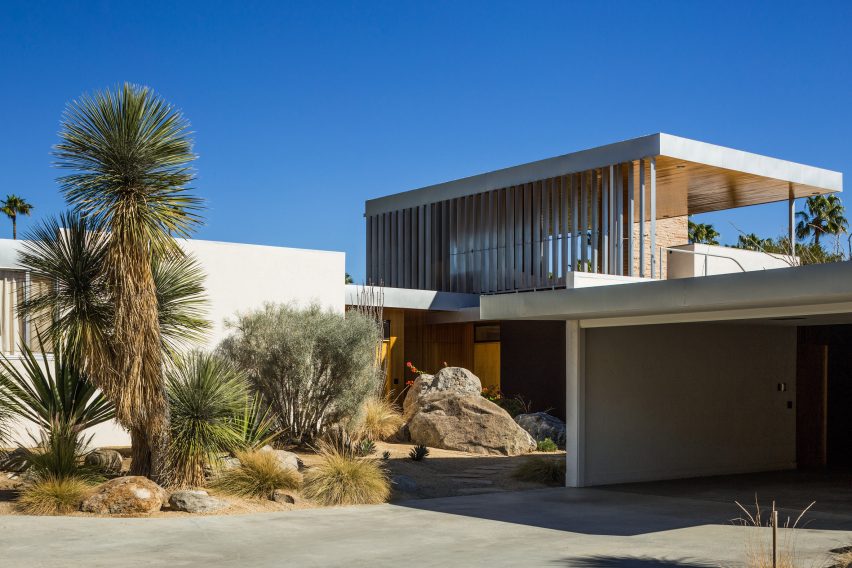
"Palm Springs represents a resort-style lifestyle," she said. "This all goes back to the 1950s, when it was meant as a place where people could escape city life."
"We have an indoor-outdoor life. We have lovely mountain palm trees. Houses are made from concrete, steel and glass that really maximise the views, and every house has a kidney-shaped swimming pool."
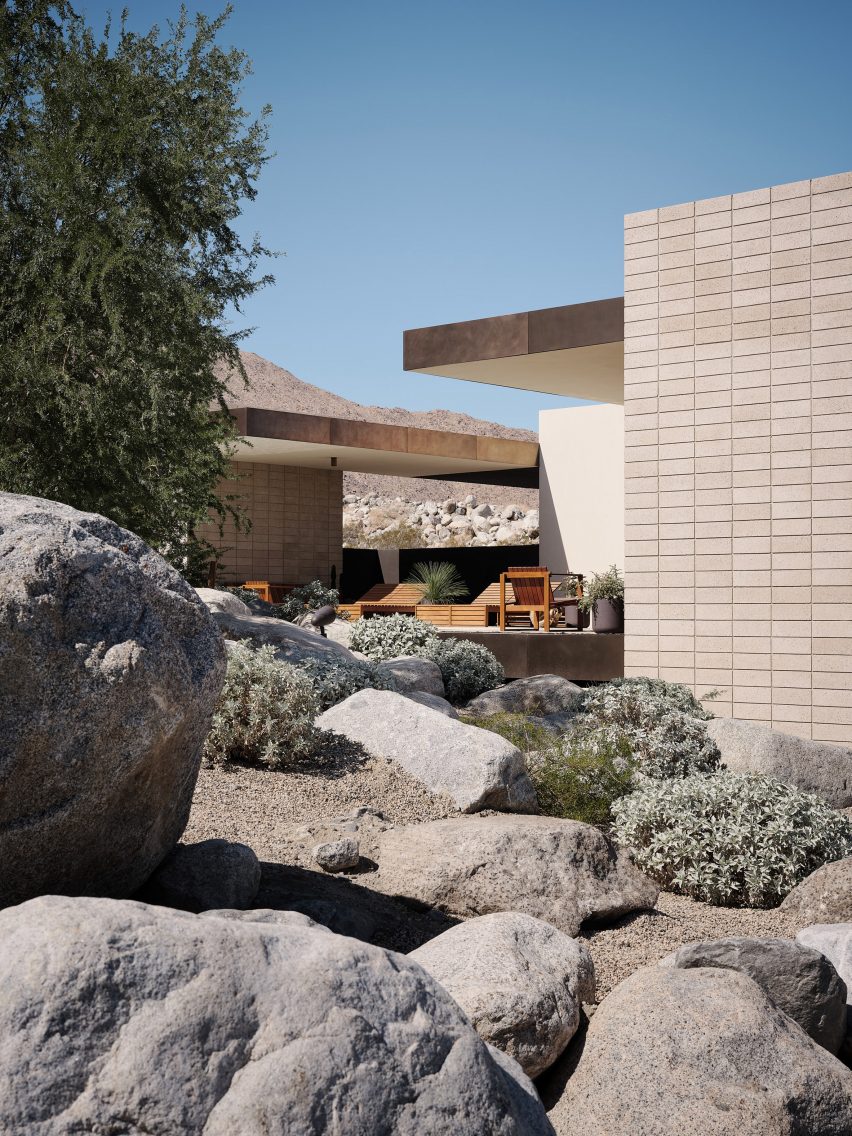
Despite its strong ties to the mid-century era, Vossler Smith believes that Palm Springs is still forward-looking in terms of new architecture.
"The face of Palm Springs is changing, it is getting younger and there is more contemporary design," she said.
New homes follows "desert modern" style
This year's programme features LA-based architects Woods + Dangaran, whose projects include the recent Desert Palisades house.
Its design combines the modernist proportions with tactile materials like brass panels and textured concrete blocks.
Vossler Smith also points to the work of Studio AR+D, led by architect Sean Lockyer, whose projects often combine raw steel elements with dramatic cantilevers. Examples include the weathering-steel-clad Desert Palisades Guardhouse.
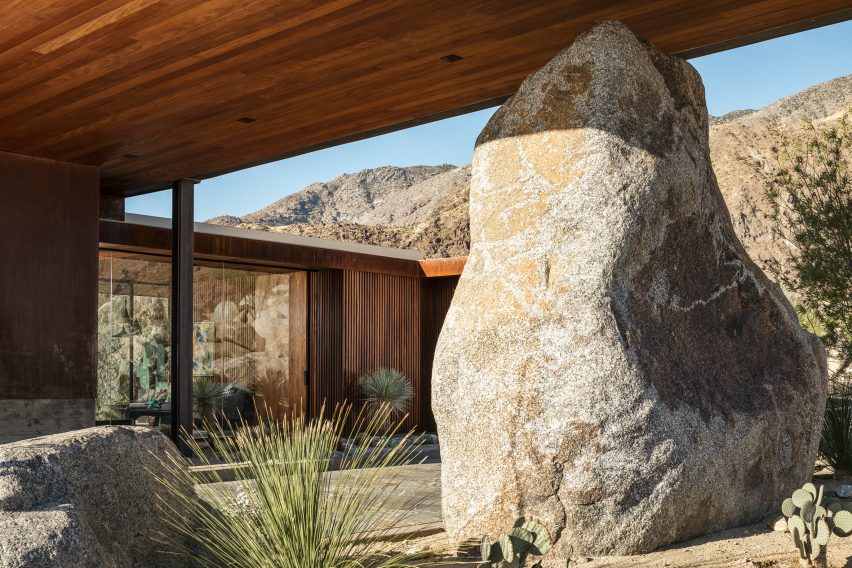
"Palm Springs continues to evolve, but the wonderful thing is that new builders and restoration projects are informed by the mid-century period," she said.
"The style we often refer to is desert modern," she added.
"It incorporates organic materials and natural features that recall the mountains, the trees, or the vast open plains of desert that we have here."
Experimental off-grid homes in the desert
According to Vossler Smith, the most experimental examples of contemporary design can be found in the high desert, on the outskirts of Palm Springs.
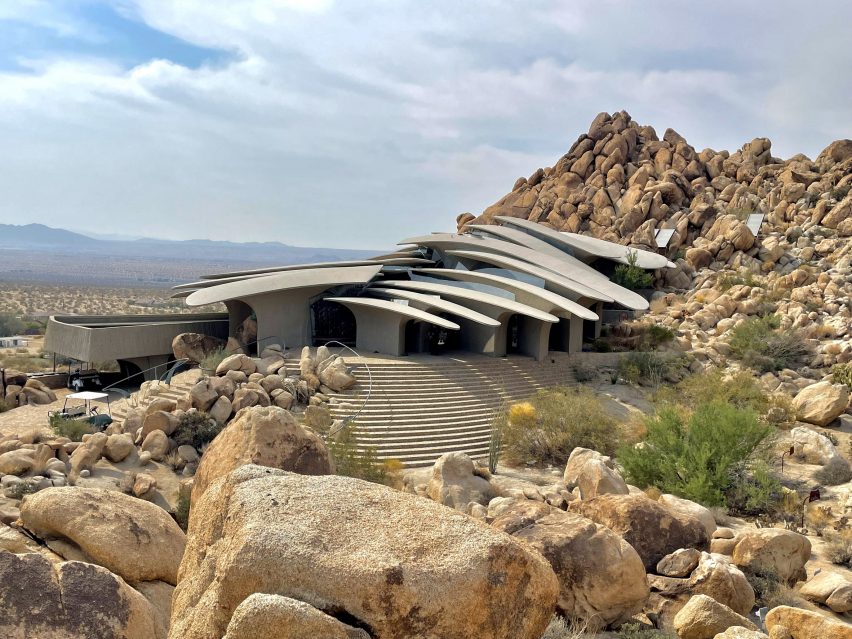
"Restrictions there are often more open and conducive to experimental design, so there are many off-grid properties popping up," she said. "Those designs inform what's happening here in the Palm Springs area."
"With so much potential for solar and desert landscaping, and drought-tolerant plantings, we're seeing planned communities convert to more sustainable practices."
Read on for an edited transcipt of the interview:
Amy Frearson: What is Modernism Week?
Lisa Vossler Smith: Our event evolved out of the need to educate, preserve and promote modernist architecture. We did that by creating tours, events and parties in homes, so that people could actually experience the architecture.
This year, our 11-day run will see about 250 homes open for public viewing. There are also tours that show the unique aspects of each of the individual areas, because they're varied. There are large California ranch-style mid-century properties on the golf course with beautiful mountain views, all the way down to Racquet Club Estate tract homes that were built by the Alexanders.
Amy Frearson: Why do you think modernist architecture continues to be popular and attract so many people to visit Palm Springs each year?
Lisa Vossler Smith: The modernist lifestyle of Palm Springs definitely represents a less complicated time. It is an era that we are nostalgic for. The post-world-war-two generation, baby boomers, children of the '70s and now new generations have all grown up seeing modernist design in pop culture.
Palm Springs represents a resort-style lifestyle. We have an indoor-outdoor life. We have lovely mountain palm trees. Houses are made from concrete, steel and glass that really maximise the views, and every house has a kidney-shaped swimming pool. This all goes back to the 1950s, when it was meant as a place where people could escape city life.
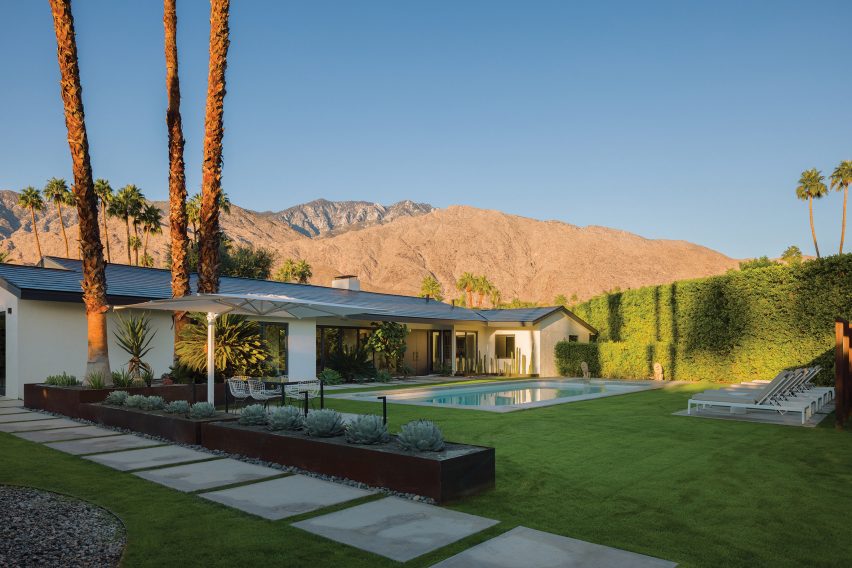
Amy Frearson: Is there a fear that Palm Springs could become stuck in the past?
Lisa Vossler Smith: Palm Springs continues to evolve, but the wonderful thing is that new builders and restoration projects are informed by the mid-century period. The face of Palm Springs is changing, it is getting younger and there is more contemporary design. It is really fun to see designers using modernist principles but also capitalising on new technologies.
Palm Springs continues to be a forward-looking region, because we are in the middle of the desert and we are somewhat self-supported. Not only by our own creative community, but also by the influx of visitors in the winter. People travel here from all over the globe, so we are widely influenced by those who bring their influence of international design.
Amy Frearson: How would you describe the contemporary Palm Springs architecture style?
Lisa Vossler Smith: Architectural firms and developers are very committed to sustainable development out here. The style we often refer to is desert modern. It incorporates organic materials and natural features that recall the mountains, the trees, or the vast open plains of desert that we have here. Landscape is definitely the thing that tends to influence design here, in part because of our terrible drought conditions and the sensitivity around water. I think all of these factors, including climate change, will impact how designers approach the desert moving forward.
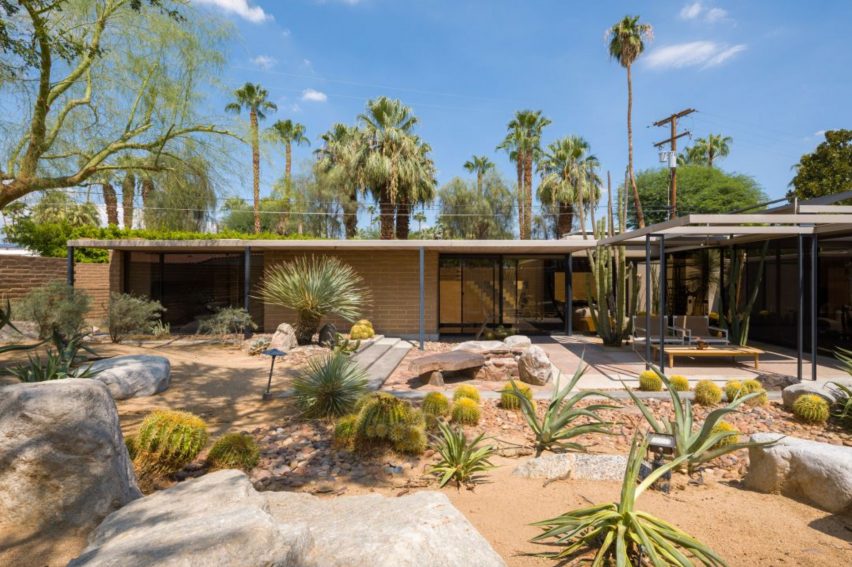
Amy Frearson: Do you think it's possible to combine the principles of modernism, which comes from a time when the environment was not a major concern, with a sustainable approach to design?
Lisa Vossler Smith: There is definitely an opportunity to use the principles and materials of modernist design for sustainable practices. Palm Springs continues to be a place where that is explored. We have such great potential for solar thermal heating and, because, we have an underground water aquifer, there are many properties with wells. So we are seeing it more and more out here.
This year our programme includes a tour of sustainable homes in the high desert, which is largely county land rather than city government land. Restrictions there are often more open and conducive to experimental design, so there are many off-grid properties popping up. Those designs inform what's happening here in the Palm Springs area. With so much potential for solar and desert landscaping, and drought-tolerant plantings, we're seeing planned communities convert to more sustainable practices.
Amy Frearson: Who are the key architects, designers and personalities shaping the future of Palm Springs?
Lisa Vossler Smith: The restoration of the Kaufmann Desert House, by the firm Marmol Radziner, was an influential moment, and Leo Marmol and Ron Radziner continue to be prominent influences here in architecture and preservation. There are also young designers like Sean Lockyer, whose designs are both contemporary, inspired by nature and also minimalist and stark at times.
Maria Song is doing wonderful, sustainable projects. In time I think she will help us solve some of our planning challenges. Then there are architects who have been out here for years like James Cioffi, a former apprentice of some of the mid-century masters. He is now in the later stage of his career but is still designing beautiful modernist buildings. There are also so many owner-builders that are doing exciting work, one house at a time.
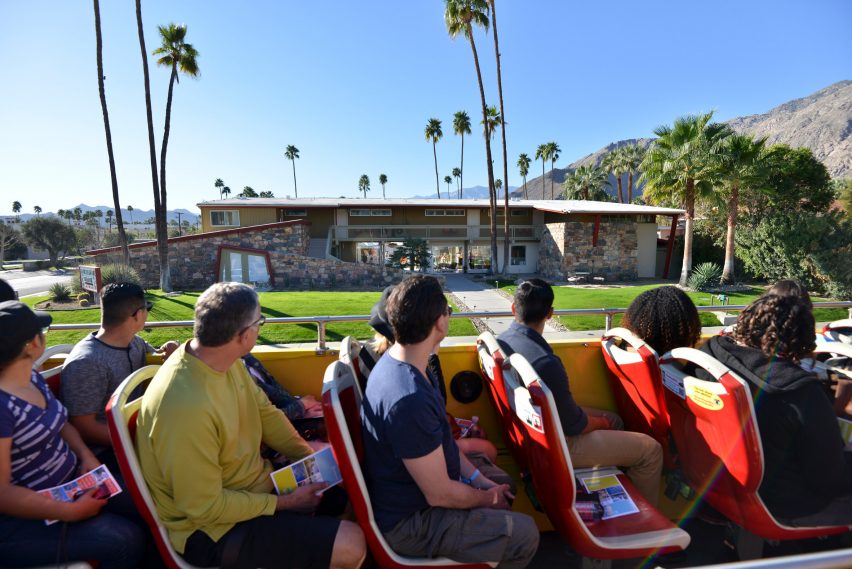
Amy Frearson: What is your personal relationship with Palm Springs?
Lisa Vossler Smith: My family moved here when I was in elementary school. I grew up in La Quinta, one of the towns in the Palm Springs region, and I've always had an interest in architecture and in our community.
My career has been in nonprofit event management and production, which is how I got involved in the festival. The subject matter is near and dear to my heart, not only because it celebrates my hometown, but because it's about developing a community that supports design and architecture.
It has been fun to to see that explode here in Palm Springs. People come to our town just to look at our homes and our buildings, and that's really a magnificent thing. We are very committed to sharing the secret sauce of Palm Springs with the rest of the world.
Amy Frearson: What is it like to live in Palm Springs?
Lisa Vossler Smith: The best thing is about being here is the neighbours. The people that live in these unique encapsulated homes are really the treasure of Palm Springs. When they open their doors to the public, you get to actually see the colourful outfits, the classic cars, the pets, and the way they live in these homes. That is all part of the mystique.
Amy Frearson: What kind of interior design can you expect to find in these homes?
Lisa Vossler Smith: Design here runs the gamut from classic Americana to 1950s kitsch, with lacy wrought iron and even those acrylic grapes you might have found on your grandmother's table. It's a kind of Jetsons-meets-Leave-It-to-Beaver 1950s world.
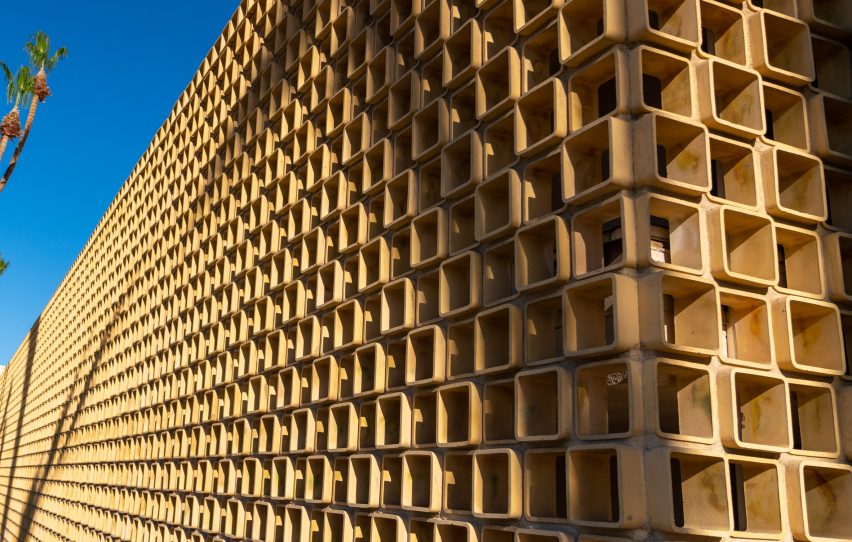
Amy Frearson: Is Modernism Week largely the same each year, or are there new things to see?
Lisa Vossler Smith: About half of the programming is new every year. The Signature Home tours show new houses every year and the Neighbourhood tours show houses that don't repeat probably for about five years. We also have special new opportunities each year, for example, this year we have the opportunity to present two special architects' homes, the Robson Chambers House and Cody's Cody. These are two exquisite minimalist mid-century modern properties that will be open just for one day of tours.
We then have repeat favourites like the Double Decker Bus Tour, which is an architectural tour of the exteriors of the neighbourhoods of Palm Springs, as well as the Palm Desert and Indian Wells home tours that we do.
Also this year, we're excited to be looking back at the pre-modernist period in Palm Springs for the first time. This has been a resort destination town since the '20s and '30s, so when modernist architecture arrived in the '30s and '40s, it was informed by much of the courtyard style and indoor outdoor areas that were created in the Spanish Colonial Revival style of architecture.
We have a great laboratory here of architecture in Palm Springs, which is I think why it endures. The design is timeless, the lifestyle was classic, and it's something that younger generations are still seeking today.
Modernism Week takes place in venues across the Palm Springs area from 16 to 26 February 2023. See Dezeen Events Guide for an up-to-date list of architecture and design events taking place around the world.
The photography is courtesy of Palm Springs Modernism Week unless otherwise stated.